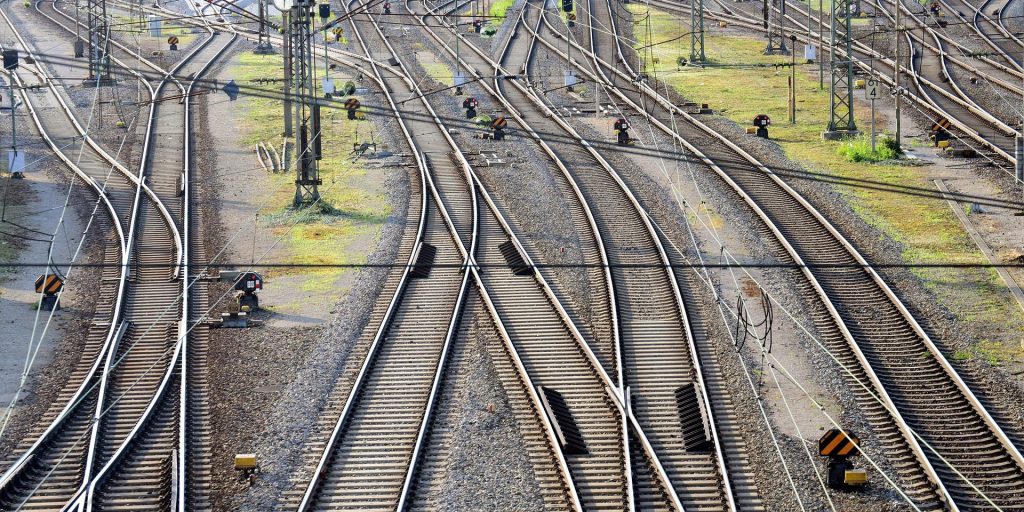Transportation decarbonization blueprint outlines path to zero-emissions by 2050
The federal government aims to cut all greenhouse emissions from America’s transportation system by 2050. On Tuesday, the Biden-Harris Administration released a blueprint outlining how it intends to get the nation there.
“We envision a future mobility system that is clean, safe, secure, accessible, affordable, and equitable, and provides decarbonized transportation options for people and goods,” reads the “U.S. National Blueprint for Transportation Decarbonization.” It builds off “The Long-Term Strategy of the United States,” the nation’s climate change action plan that was published in 2021, and describes in detail reduction strategies for all transportation modes. “Achieving this vision will require actionable strategies that result in a major transformation of how people and goods move in the United States, including the modes of travel chosen and the fuels used.”
Notably, the transportation sector is the largest greenhouse gas emitter in the United States, accounting for one-third of all emissions. The blueprint centers around three primary strategies: First, increase convenience by ensuring essential services are close to commuters; second, improve efficiency by making all transportation options more reliable and accessible; third, transition to clean energy by adopting zero-emission vehicles. Updating policy and regulation, investing, training the workforce, leveraging data, and promoting research are primary ways the government plans to achieve its goals.
“This transformation is already underway, and consumers and businesses have started to adopt new clean technologies, but the trend needs to accelerate dramatically both in scale and scope,” the blueprint says.
Hurdles that stand in the way won’t be easy to overcome. Currently, passenger vehicles (of which there are more than 280 million on the road) produce half the sector’s emissions, followed by medium- and heavy-duty vehicles (21%). The vast majority of both are reliant on fossil fuels.
“In 2021, U.S. EV sales more than doubled to over half a million vehicles sold, reaching 4.5% of the total market share,” the blueprint says. “In California, where support for EVs has been substantial, EVs accounted for about 18% of vehicle sales in the first half of 2022.”
With EV sales increasingly organically as prices come down and commercial manufacturers investing in future zero-emission vehicles, the blueprint calls for clean energy-friendly policies, continued funding of research, and increased availability of recharging stations.
Creating more passenger rail routes can also cut emissions by reducing “traffic congestion in and between cities,” the blueprint continues. Currently, freight comprises 91% of all energy consumed by rail domestically.
To achieve these goals, coordination is needed at all levels of government—federal, Tribal, state, county, and local, along with nonprofit organizations and private industries. It’s also necessary across agencies and fields of work.
“Transportation policy is inseparable from housing and energy policy, and transportation accounts for a major share of US greenhouse gas emissions, so we must work together in an integrated way to confront the climate crisis,” said U.S. Secretary of Transportation Pete Buttigieg in a statement. “Every decision about transportation is also an opportunity to build a cleaner, healthier, more prosperous future. When our air is cleaner; when more people can get good-paying jobs; when everyone stays connected to the resources they need and the people they love, we are all better off.”
In the short term, before 2030, the blueprint commits to working with local communities by developing scalable land-use planning solutions, creating safer street designs, implementing healthier transportation options, and by sharing best practices, among other things.
Other goals outlined in the document include reducing the national transportation cost burden by at least 5% by 2030, investing in energy efficient rail and public transportation infrastructure, and providing incentives to support increased use of green travel options.
Expanded, equitable access with a focus on social justice and safety underpin the blueprint’s recommendations.
“Overburdened and historically underserved communities continue to bear the economic and health burdens of higher emissions, noise, and worsened air quality, and it is critical that these communities are not left behind in the transition to a decarbonized economy,” the report says.
Marcia Fudge, secretary of U.S. Housing and Urban Development, echoed this in a statement, noting her department will “join our federal partners at Energy, DOT, and EPA to ensure that clean transportation investments are made equitably and include communities and households that have been most harmed by environmental injustice. We look forward to working together to better align transportation, housing, and community development investments in these and other communities across the country.”




















